Toshiba Satellite L645D: Mobile AMD at 3GHz
by Dustin Sklavos on March 9, 2011 3:20 AM ESTMostly Portable
A point where AMD-based notebooks have traditionally suffered (with the notable exceptions of both Sony's EE34 and pretty much anything Fusion-based) is battery running time. Toshiba equips the L645D with a mediocre six-cell, 48Wh battery that may somewhat dampen the mobility of a notebook that's otherwise fairly portable.
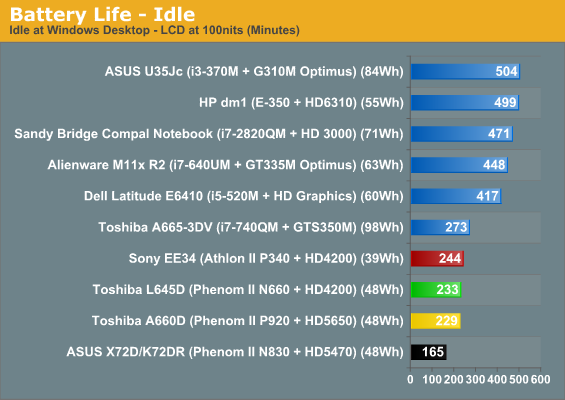
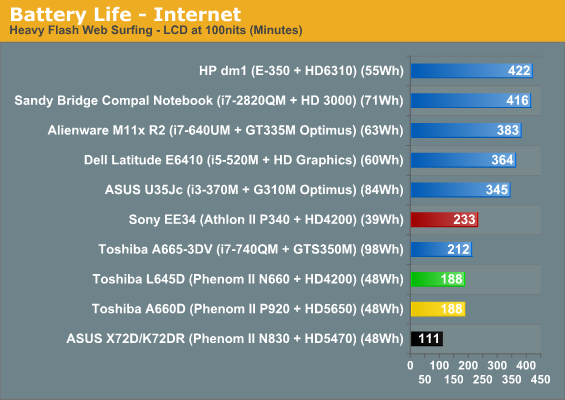
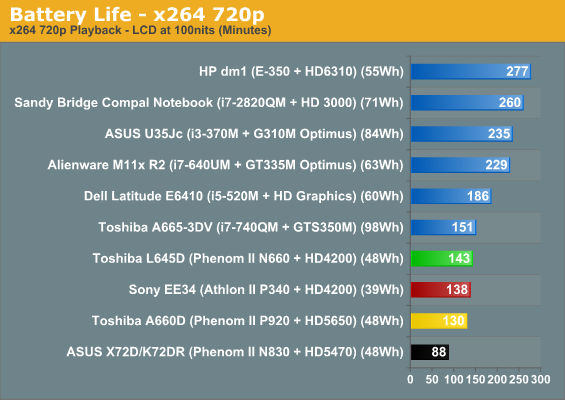
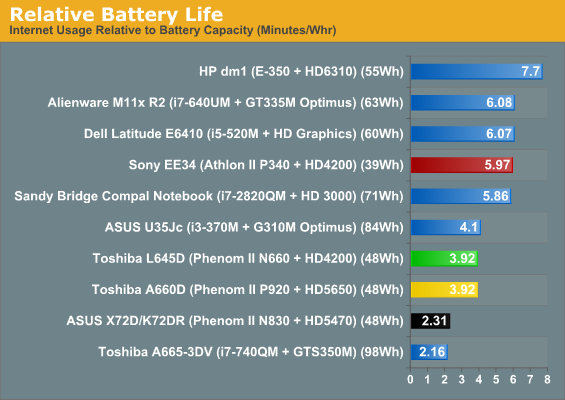
The relative battery life of the L645D isn't completely dire, but the Sony EE34's 25-watt processor runs roughshod over it. In practice, though, the L645D is still able to achieve three hours of useful running time surfing the internet. This is something Jarred's mentioned before and we've discussed at length: if you look at the running times of the Intel-based notebooks, you'll notice they're all equipped with much larger batteries. It seems like manufacturers almost deliberately cripple AMD-based notebooks.
We're not suggesting the L645D would offer battery life on par with an equivalent Intel machine, but it's still hamstrung by a middling battery. It's also clear there are power optimizations left on the table, as the Sony EE34 posts better battery life in two of the three tests despite having a smaller battery; the H.264 playback test is closer to what we'd expect, but the Internet test in particular has Sony leading by over 50% in relative battery life.
Heat and Noise
Given the smaller chassis of the L645D compared to some of the larger notebooks we've reviewed, it isn't unreasonable to expect it's going to have a tougher time dealing with the thermals of the Phenom II N660. We were pleasantly surprised.
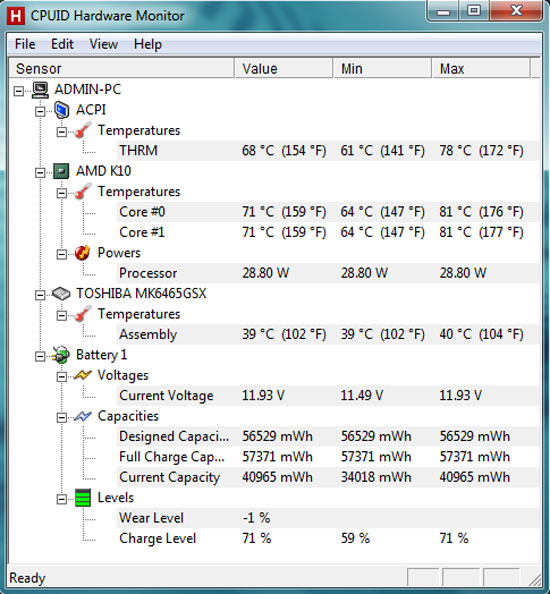
The processor temperatures are going to seem a little alarming, but they're not too far from where we've seen Arrandale-based notebooks hit. It may be better to look at the hard drive's temperature, which remains constant under both idle and load: 40C is perfectly reasonable. The L645D isn't in danger of overheating.
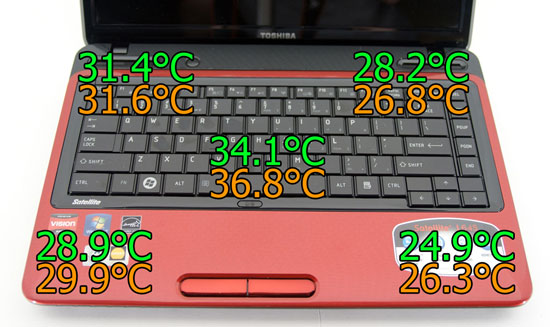
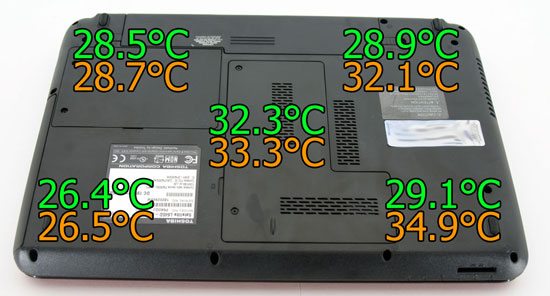
Idle and load surface temperatures are a little hotter than some of the other notebooks we've reviewed recently, but still nothing to complain about. Palmrests remain comfortably cool, as does the bottom of the notebook, with the center of the keyboard getting the hottest under sustained load. The central hot spot's 36.8C equates to roughly 100F, which is by no means cool but also not swelteringly hot either.
The L645D actually handles heat pretty well, and though the fan can definitely spin up noticeably under load, it's not aggravatingly loud and certainly not any louder than competing notebooks tend to be.










61 Comments
View All Comments
Shanks22 - Monday, April 11, 2011 - link
What's with Toshiba opting out of the ATI drivers? Does this mean the buyer can't just go to ATI's website and download the drivers from there?